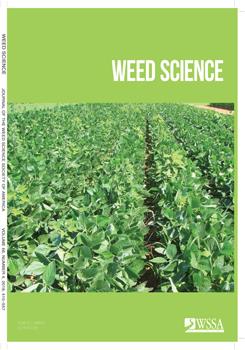The parasitic purple witchweed [Striga hermonthica (Del.) Benth.] is a serious constraint to maize production in sub-Saharan Africa, especially in poor soils. Various Striga spp. control measures have been developed, but these have not been assessed in an integrated system. This study was conducted to evaluate a set of promising technologies for S. hermonthica management in western Kenya. We evaluated three maize genotypes either intercropped with peanut (Arachis hypogaea L.), soybean [Glycine max (L.) Merr.], or silverleaf desmodium [Desmodium uncinatum (Jacq.) DC] or as a sole crop at two locations under artificial S. hermonthica infestation and at three locations under natural S. hermonthica infestation between 2011 and 2013. Combined ANOVA showed significant (P<0.05) cropping system and cropping system by environment interactions for most traits measured. Grain yield was highest for maize grown in soybean rotation (3,672 kg ha-1) under artificial infestation and in D. uncinatum and peanut cropping systems (3,203 kg ha-1 and 3,193 kg ha-1) under natural infestation. Grain yield was highest for the Striga spp.-resistant hybrid under both methods of infestation. A lower number of emerged S. hermonthica plants per square meter were recorded at 10 and 12 wk after planting on maize grown under D. uncinatum in the artificial S. hermonthica infestation. A combination of herbicide-resistant maize varieties intercropped with legumes was a more effective method for S. hermonthica control than individualcomponent technologies. Herbicide-resistant and Striga spp.-resistant maize integrated with legumes would help reduce the Striga spp. seedbank in the soil. Farmers should be encouraged to adopt an integrated approach to control Striga spp. for better maize yields.
How to translate text using browser tools
1 July 2018
Assessment of Management Options on Striga Infestation and Maize Grain Yield in Kenya
Fred Kanampiu,
Dan Makumbi,
Edna Mageto,
Gospel Omanya,
Sammy Waruingi,
Peter Musyoka,
Joel Ransom

Weed Science
Vol. 66 • No. 4
July-August 2018
Vol. 66 • No. 4
July-August 2018
cropping systems
Herbicide resistance
imazapyr-resistant hybrids
legumes
maize varieties
peanut




